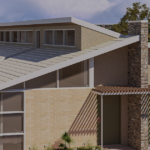The Block is famous for tight timelines too – as mentioned previously, each room is completed in just one week and, because the teams don’t know which room they will be renovating from one week to the next, it’s impossible to plan ahead.
However, Mark says this challenge is not that dissimilar to most building projects, which also face tight timeframes, both commercially and residentially. “We have an ever-changing marketplace at the moment,” he says. “As a business, it is something that we are mindful of.”
There were many great examples of CSR products on The Block this year, but Mark says he thought the standout was the use of the Manhattan range from PGH Bricks (yet to be revealed on the show). “Brick is one of those items where it’s got a decorative finish and structural element, but it also has that rustic feel,” he explains. “So there are many applications that it can be used in.”
This year, The Block build team also used the AFS Rediwall system to create the foundations of the new modern extensions, which greatly helped to minimise the trades needed onsite. “You don’t need a specialist installer; you can use your own crews,” says Mark. “And again, the support that comes from CSR for that particular product line is phenomenal.”



